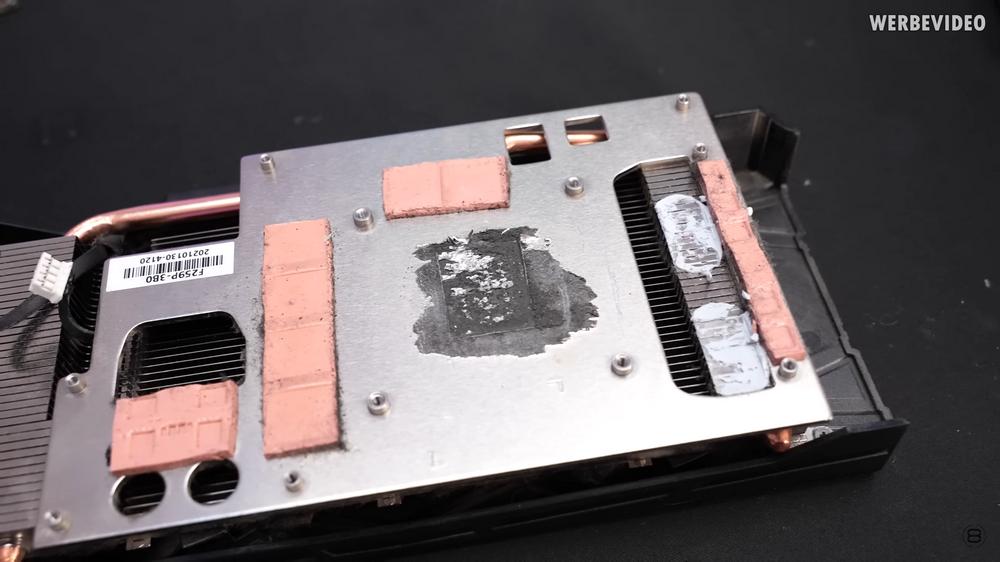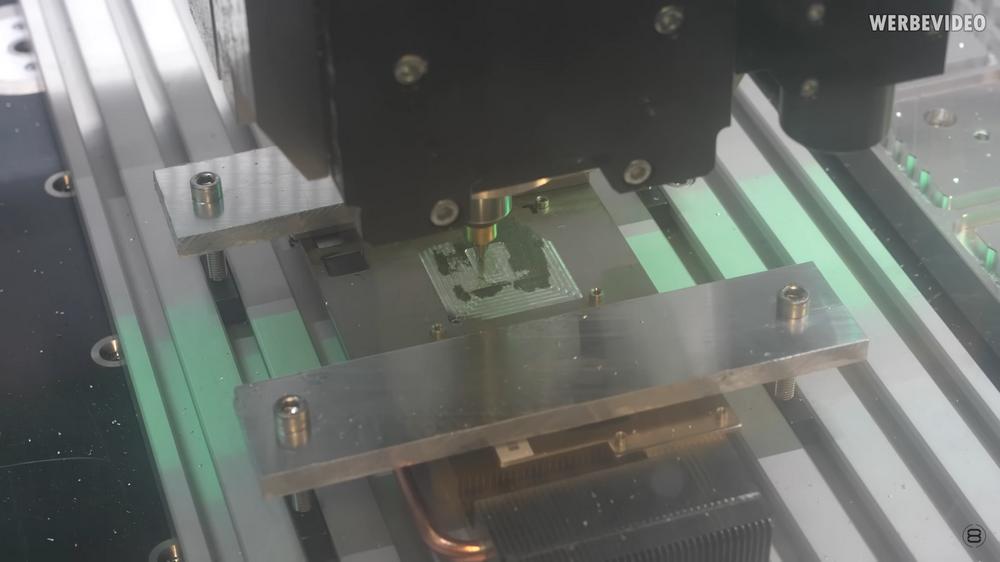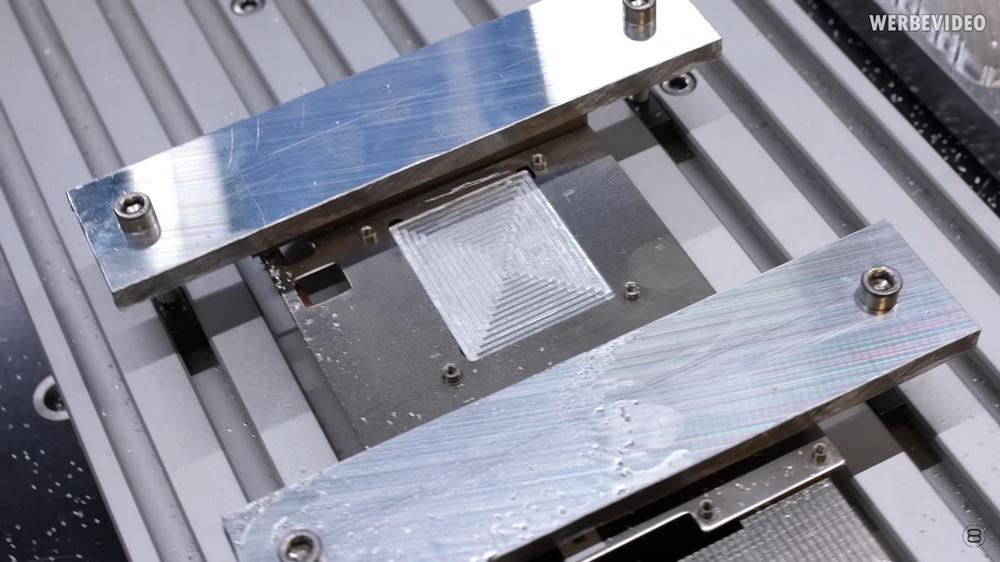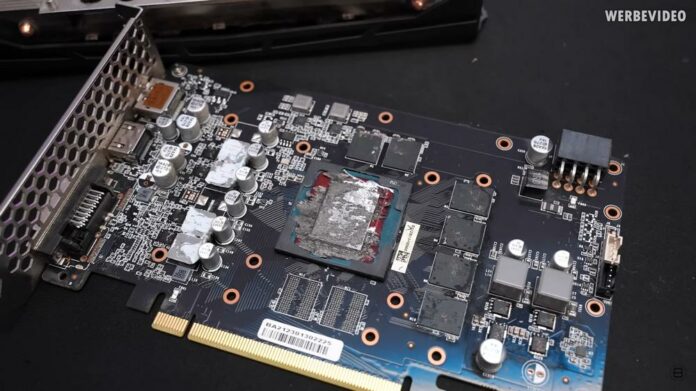It’s always intriguing to see modders go the extra yard in an effort to maximise their rig, but do be wary. Mixing different materials can result in undesirable consequences, from gunk build-up in water coolers to material degradation in today’s case.
German YouTuber der8auer has received a graphics card from a viewer that replaced the original TIM (Thermal Interface Material) with liquid metal, assuming it will provide better heat transfer and thus lower temperature, which in turn may allow the GPU to run at higher frequencies. A win-win situation, right?
Well, not too fast. Things didn’t go as planned, since our unlucky user failed to consider the cooler’s material reaction to liquid metal. This miscalculation caused the RTX 2060’s aluminium cooler to literally start decomposing atop the underlying GPU. You can see the unexpected and unwanted result in the video below.
The damage caused by the reaction reached a point where the cooler couldn’t work properly, with GPU temperatures hitting 100°C before thermal throttling kicks in. The only solution at this point was a heavy cooler modification which consisted of first cleaning any leftover residue and scraping off as much as possible of the damaged aluminium heatsink. After that der8auer proceeded to CNC mill all the area deemed bad since even the tiniest residue could still cause problems later.

In the end, some 0.5mm of aluminium had been shaved, preventing the cooler from making proper (if any) contact with the GPU. To fix this, cooler height was shortened by adjusting the screw standoffs, which in turn requires thinner thermal pads to be sandwiched between the memory chips/VRMs and the cooler. That’s some rescue mission.
After all repairs were finished, der8auer applied a ‘normal’ thermal paste and new thermal pads before reassembling the card. The results speak for themselves, temperatures have been lowered by 24°C, now maxing out at 76°C. For reference, these temps are in the same ballpark as a new card, give or take a few degrees.


This story is a welcome reminder for anyone thinking about switching to liquid metal. It’s not just a drop-in modification, much care needs to be taken, not only because of its electric conductivity, but also as our unlucky friend learned the hard way, material and chemical compatibility. Sometimes it pays to keep it simple.


